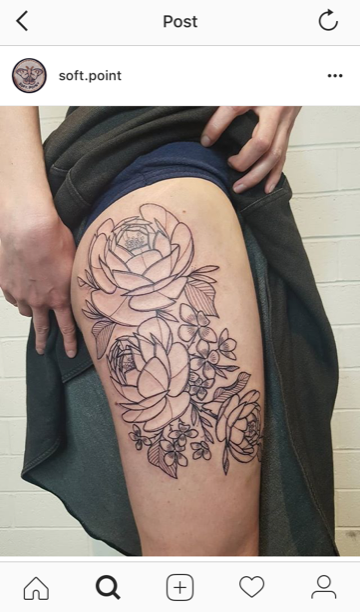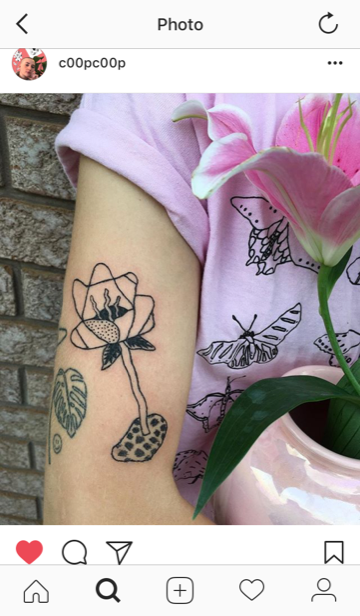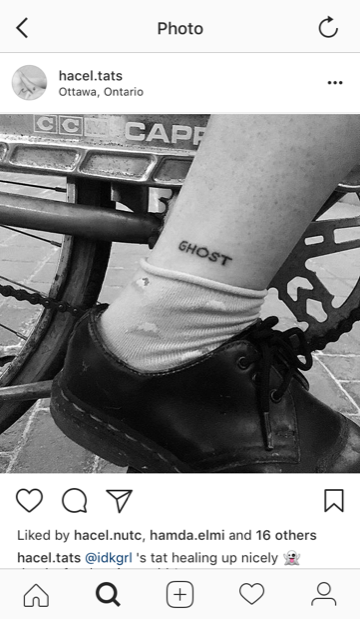BY ASHA SWANN
If you don’t have a tattoo, then you probably know someone who does. If getting one done in a professional shop, the client can easily expect to pay a few hundred dollars. But what if the artists at your local shop don’t make you feel safe, and the cost is too high? The rise of nontraditional tattoos such as stick and pokes and “bedroom studios” are the daunting new norm for young people, especially in Toronto.
For some artists, creating the unique experience of getting a nontraditional tattoo is essential because the professional shops just aren’t creating a positive environment.
“My first tattoo experience was actually really bad,” said Kat Gomboc, who tattoos privately in their own home. “I didn’t feel very safe and I regret the tattoo. I didn’t feel like I had much agency over my body.”
Gomboc liked the control that comes with tattooing out of their own home. They said it gives the client a higher level of comfort.

“It’s easy for people to take advantage of people in situation like that. It’s important for people to feel comfortable, like they have control of their body,” they said. “Particularly with women and vulnerable people.”
Gomboc felt that having these nontraditional spaces are becoming more popular because people are feeling less safe in professional shops.
“It’s entirely because of the need for safer spaces and feeling like you have some control and that you’re not going to be objectified in your space. A lot of people com from places of trauma,” they said. “[Nontraditional spaces] are getting huge, I think, because more shops are sort of realizing that it’s this big, macho, bro-fest so they need more inclusive spaces. Nontraditional spaces are filling that need.”
But of course, getting a tattoo in one of these spaces is illegal. And illegal tattoos can come with many safety risks.
“I do want nontraditional places to exist, however, I do not want nontraditional space to exist if people don’t have proper training in bloodborne pathogens,” Gomboc said.
Gombac was trained professionally when they used to work in a professional shop before going to their own private studio. However, you don’t need to be a shop professional to receive training. Those looking for training can become safety certified through courses, such as the one provided by Red Cross.
“I have proper training,” said Gomboc. “I just want everyone to be safe and healthy.”
Some artists in nontraditional spaces use professional tattooing machines, but handpoked tattoos, also known as stick and pokes, can also be a common practice.

For Ottawa-based artist Rim Slaoui, this machine-free method is creative and imperfect. She uses professional tattooing needles and hand pokes each design slowly, dot by dot, after dipping the needle into ink. She often does this in the client’s home or at the school studio.

“You want to give people that ability to trust you…I usually go to people’s houses or I go to my art studio because I’m an art student,” she said. “I feel like it’s the perfect space to be creative in.”
Handpoked tattoos also come with a safety risk. Slaoui tries to minimize this risk by keeping her equipment sanitary and professional.
“I use professional tattoo needles and I use three round lighters and five round lighters,” she said. “I always use sterilized materials, I clean everything, it’s always in a safe space.”
Some artists who start off doing handpoked tattoos eventually go to machines.
“I started off as a lot of people do not, doing stick and pokes on myself, learning through the internet,” said Cooper Scott, who, like Gomboc, also privately tattoos in their own home. “Then I progressed doing it on friends, and then eventually wanted to start doing machine tattooing.”
The artists believe that these nontraditional methods of tattooing are filling the need for a more accessible art form, which is appealing to a wider audience.
“They’re more accessible,” said Slaoui. “People really pick that up as a way to express themselves.”
While nontraditional tattooing is becoming more commonplace, it is always important that the client feels completely safe and comfortable. If under any circumstances does the person feel unsafe, they should not go through with the tattoo.
“I want [artists] to have proper safety training in order to keep these spaces going in the long run,” said Gomboc. “If there are cases of people getting sick or contracting something in these spaces then it puts all the other nontraditional spaces at risk.”
